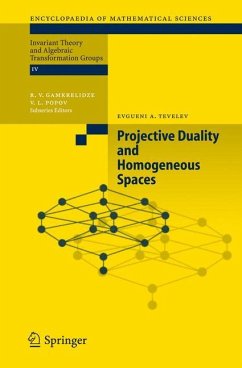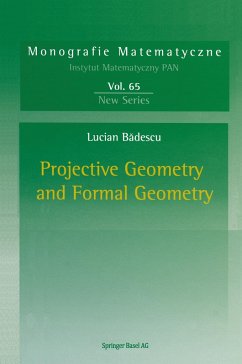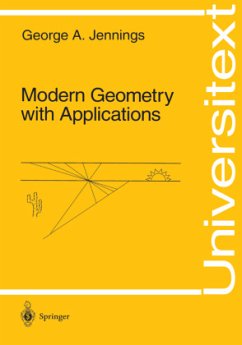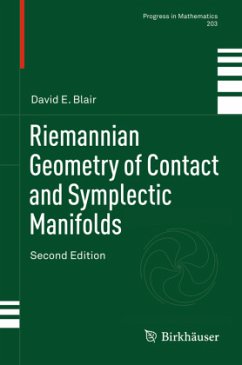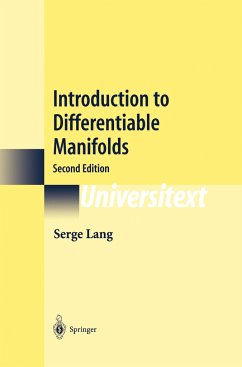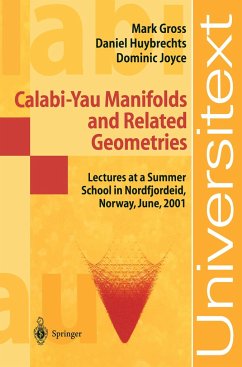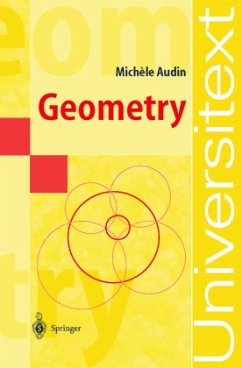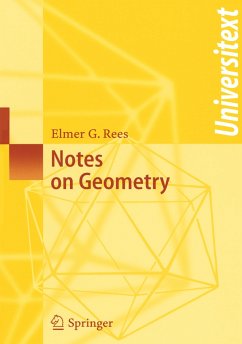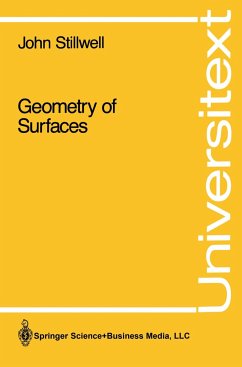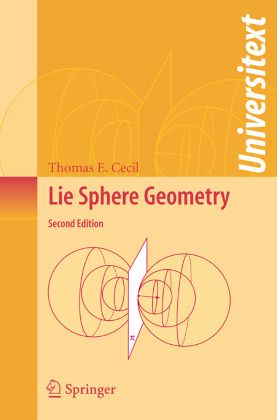
Lie Sphere Geometry
With Applications to Submanifolds

PAYBACK Punkte
27 °P sammeln!
This book provides a clear and comprehensive modern treatment of Lie sphere geometry and its applications to the study of Euclidean submanifolds. It begins with the construction of the space of spheres, including the fundamental notions of oriented contact, parabolic pencils of spheres, and Lie sphere transformations. The link with Euclidean submanifold theory is established via the Legendre map, which provides a powerful framework for the study of submanifolds, especially those characterized by restrictions on their curvature spheres.This new edition contains revised sections on taut submanif...
This book provides a clear and comprehensive modern treatment of Lie sphere geometry and its applications to the study of Euclidean submanifolds. It begins with the construction of the space of spheres, including the fundamental notions of oriented contact, parabolic pencils of spheres, and Lie sphere transformations. The link with Euclidean submanifold theory is established via the Legendre map, which provides a powerful framework for the study of submanifolds, especially those characterized by restrictions on their curvature spheres.
This new edition contains revised sections on taut submanifolds, compact proper Dupin submanifolds, reducible Dupin submanifolds, and the cyclides of Dupin. Completely new material on isoparametric hypersurfaces in spheres and Dupin hypersurfaces with three and four principal curvatures is also included. The author surveys the known results in these fields and indicates directions for further research and wider application of the methodsof Lie sphere geometry.
Further key features of Lie Sphere Geometry 2/e:
- Provides the reader with all the necessary background to reach the frontiers of research in this area
- Fills a gap in the literature; no other thorough examination of Lie sphere geometry and its applications to submanifold theory
- Complete treatment of the cyclides of Dupin, including 11 computer-generated illustrations
- Rigorous exposition driven by motivation and ample examples.
Reviews from the first edition:
"The book under review sets out the basic material on Lie sphere geometry in modern notation, thus making it accessible to students and researchers in differential geometry.....This is a carefully written, thorough, and very readable book. There is an excellent bibliography that not only provides pointers to proofs that have been omitted, but gives appropriate references for the results presented. It should be useful to all geometers workingin the theory of submanifolds."
- P.J. Ryan, MathSciNet
"The book under review is an excellent monograph about Lie sphere geometry and its recent applications to the study of submanifolds of Euclidean space.....The book is written in a very clear and precise style. It contains about a hundred references, many comments of and hints to the topical literature, and can be considered as a milestone in the recent development of a classical geometry, to which the author contributed essential results."
- R. Sulanke, Zentralblatt
This new edition contains revised sections on taut submanifolds, compact proper Dupin submanifolds, reducible Dupin submanifolds, and the cyclides of Dupin. Completely new material on isoparametric hypersurfaces in spheres and Dupin hypersurfaces with three and four principal curvatures is also included. The author surveys the known results in these fields and indicates directions for further research and wider application of the methodsof Lie sphere geometry.
Further key features of Lie Sphere Geometry 2/e:
- Provides the reader with all the necessary background to reach the frontiers of research in this area
- Fills a gap in the literature; no other thorough examination of Lie sphere geometry and its applications to submanifold theory
- Complete treatment of the cyclides of Dupin, including 11 computer-generated illustrations
- Rigorous exposition driven by motivation and ample examples.
Reviews from the first edition:
"The book under review sets out the basic material on Lie sphere geometry in modern notation, thus making it accessible to students and researchers in differential geometry.....This is a carefully written, thorough, and very readable book. There is an excellent bibliography that not only provides pointers to proofs that have been omitted, but gives appropriate references for the results presented. It should be useful to all geometers workingin the theory of submanifolds."
- P.J. Ryan, MathSciNet
"The book under review is an excellent monograph about Lie sphere geometry and its recent applications to the study of submanifolds of Euclidean space.....The book is written in a very clear and precise style. It contains about a hundred references, many comments of and hints to the topical literature, and can be considered as a milestone in the recent development of a classical geometry, to which the author contributed essential results."
- R. Sulanke, Zentralblatt





